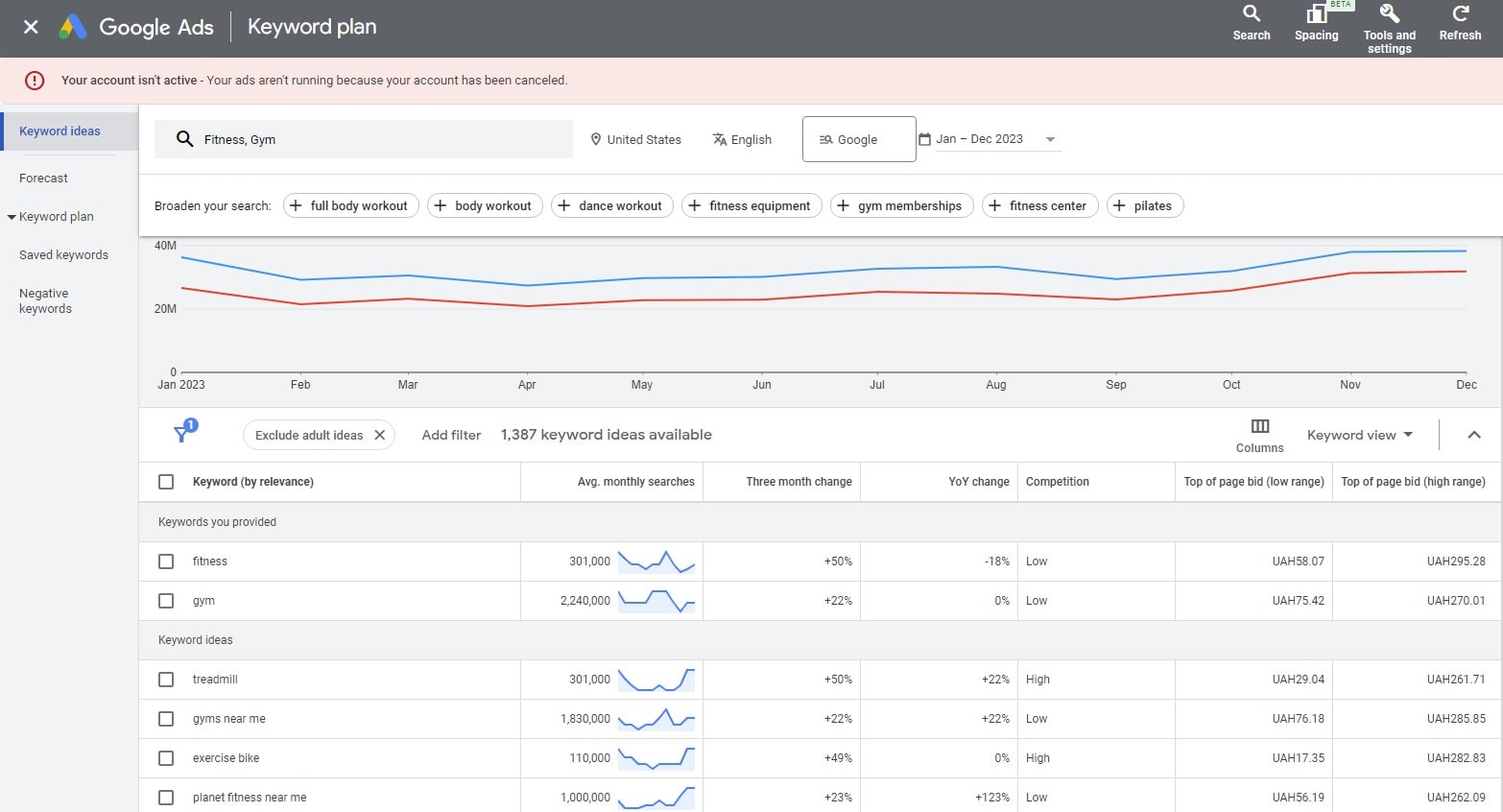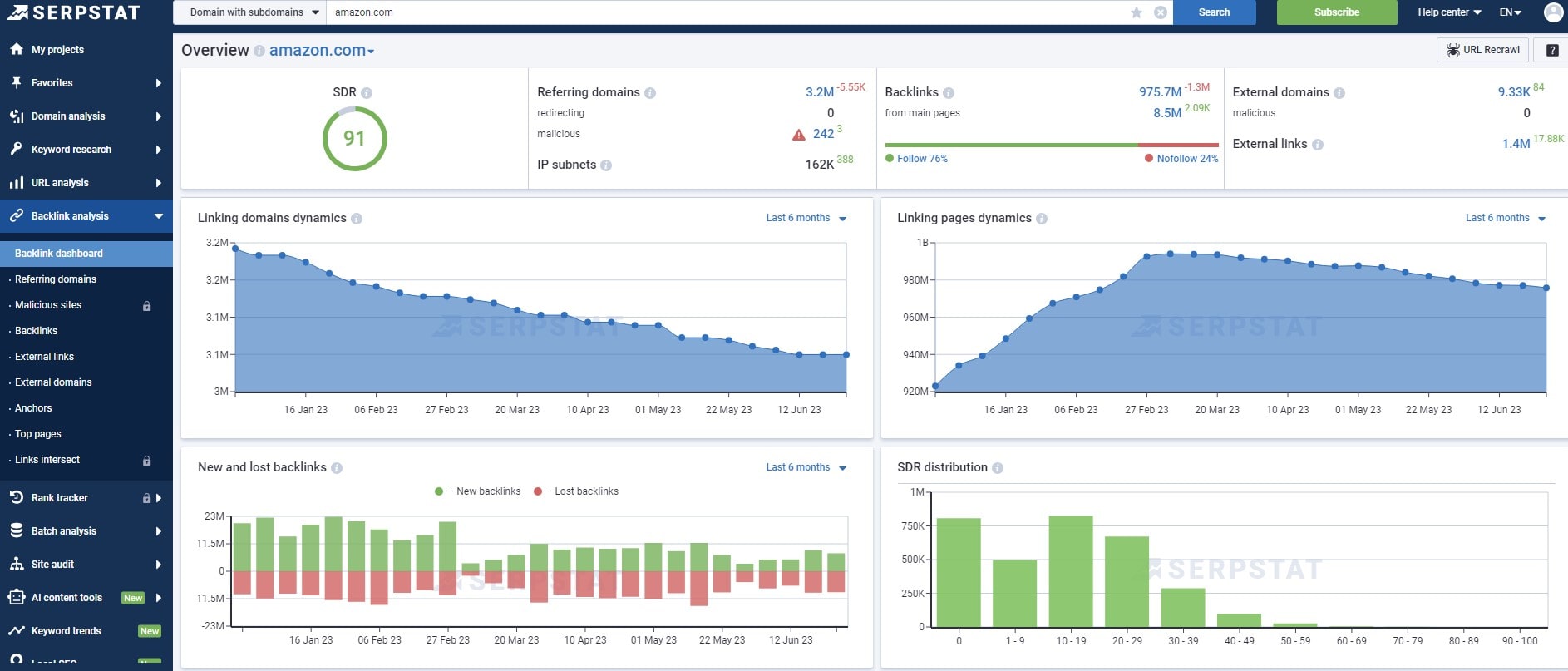In the bustling fitness industry, SEO is the unsung hero behind a gym’s digital success. Picture this: a local gym brimming with top-notch equipment yet needs help attracting online traffic. That’s where SEO flexes its muscle, transforming online visibility into real-world memberships. Let’s dive into how SEO tailors to fitness and gym websites:
- Crafting keyword-rich, engaging content that resonates with fitness enthusiasts.
- Leveraging local SEO to put your gym on the virtual map.
- Utilizing backlinks from reputable fitness forums and blogs.
Imagine a gym specializing in CrossFit. By integrating specific CrossFit-related keywords into their website, they spike their search engine rankings and connect with a targeted audience hungry for their unique offerings. Similarly, a yoga studio could weave in terms like “mindfulness” and “flexibility training,” capturing a different segment of the fitness market.

Amidst this, Plerdy’s tool emerges as a vital ally. It’s not just about climbing the SEO ladder; it’s about understanding user behavior to enhance conversion rates and user experience. Whether through meticulous A/B testing or deep dives into SEO analytics, Plerdy helps fitness websites become more than just online brochures – they become gateways to healthier lives. Harness the power of Plerdy to elevate your gym’s digital footprint and see your membership numbers flex and grow.
Importance of SEO in the Fitness Industry
In the bustling gym and fitness sector, mastering SEO is akin to a well-executed fitness routine – essential for peak performance. Effective SEO strategies are vital for fitness businesses to stand out in the digital marketplace as crowded as a popular gym in January. When it comes to the digital world, SEO is like a strategic coach; it helps gym websites stand out from the crowd and get top search engine rankings.
Here’s why SEO is a powerhouse for fitness centers:
- Visibility in a Competitive Market: With countless online fitness options, a gym’s visibility hinges on robust SEO. This digital muscle-building ensures your gym’s website flexes its presence right where potential clients search.
- Tailored User Experience: Like a personalized workout plan, SEO fine-tunes your website. It ensures fitness enthusiasts find what they’re seeking – local gym locations, workout classes, or fitness tips.
- Building Trust and Authority: High search engine rankings are the digital equivalent of a fitness expert’s endorsement. They foster trust and credibility among potential gym-goers, making your fitness center the go-to spot for their fitness needs.
- Enhancing Engagement and Conversion: SEO isn’t just about drawing traffic; it’s about attracting the right crowd. Through targeted keywords and optimized content, your gym’s website will draw fitness fans and convert them into loyal members.
To put it simply, search engine optimization (SEO) is an integral part of any successful digital strategy for fitness facilities and gyms. It’s about making your fitness hub the first stop for those embarking on their fitness journey, ensuring your gym is not just seen but chosen.
List of SEO Tips for Fitness & Gyms Websites
Delving into the “How to do SEO for Fitness & Gyms Websites?” checklist is like opening a treasure trove of digital strategies, each tailored to pump up your gym’s online persona. Navigating through this list, you’ll encounter savvy SEO tactics that are a perfect fit for the fitness world, ensuring your gym’s website isn’t just flexing for the show but also pulling its weight in search rankings. Think of this as your gym routine for the web – a regimen that shapes and tones your online presence, ensuring your gym stands out in the crowded digital workout space.
Keyword Research for Fitness & Gym Websites

In the fitness and gym industry, SEO pivots significantly on keyword research, a process akin to selecting the right weights for an effective workout. It’s about finding terms that resonate with your target audience, ensuring your gym’s digital presence pumps up in search results. The art of keyword research in this niche involves understanding market trends, fitness lingo, and user intentions.
Consider these strategic steps in keyword research for fitness and gym websites:
- Targeting Niche-Specific Terms: Your gym might specialize in yoga, CrossFit, or personal training. Pinpoint keywords that mirror these specialties, connecting with a specific fitness community.
- Balancing Broad and Long-Tail Keywords: While broad terms like “gym near me” cast a wide net, long-tail keywords like “women’s kickboxing classes downtown” hone in on specific searches.
- Leveraging Local SEO: For gyms, local search terms are gold. Incorporating location-based keywords helps locals find your fitness center when they search for nearby options.
- Analyzing Competitor Keywords: Keep an eye on the competition. What keywords are they ranking for? This insight can guide your SEO strategy, helping your gym outlift rivals in search rankings.
- Seasonal and Trend-Based Keywords: Fitness trends ebb and flow. Stay ahead by incorporating keywords based on seasonal trends, like “summer beach body workouts” or “new year’s fitness resolutions.”
Fitness and gym website keyword research requires industry understanding and SEO expertise. It’s about crafting a keyword strategy that flexes your gym’s strengths, ensuring your website shows up and stands out in the ever-competitive digital fitness landscape.
Optimizing Website Structure and Design
Just as a well-organized gym entices fitness enthusiasts, an optimized website structure and design are crucial in drawing and retaining visitors to gym and fitness websites. In the realm of SEO, this optimization is more than a mere cosmetic upgrade; it’s a functional revamp that boosts user experience and search engine rankings.
Key elements in optimizing website structure and design include:
- Intuitive Navigation: Ensure visitors can easily find what they’re looking for, whether it’s class schedules, gym memberships, or fitness blogs. A clear, logical layout keeps users engaged and reduces bounce rates, a positive signal for SEO.
- Mobile Responsiveness: With more people browsing smartphones, a mobile-friendly design is non-negotiable. Gyms need websites that adjust seamlessly to different screen sizes, enhancing accessibility and user experience.
- Fast Loading Speeds: A slow-loading fitness website can turn potential gym-goers away. Optimizing images, streamlining code, and choosing a reliable hosting service keep your site running as swiftly as a treadmill.
- Visually Appealing Design: Incorporate vibrant, high-quality images and videos that showcase your gym’s facilities and atmosphere. A visually appealing website attracts attention and encourages longer visits, which can boost SEO rankings.
- Strategic Use of Keywords: Embed fitness and gym-related keywords naturally within titles, headings, and content. This helps search engines understand your site’s relevance and align it with what your target audience is searching for.
Having a well-organized and visually appealing website is more than just having a digital storefront for fitness centers and gyms. It’s a key player in your SEO strategy, helping to lift your online visibility and draw in more fitness enthusiasts.
Content Creation for Fitness & Gym Websites

Content for fitness and gym websites must be exciting, instructive, and audience-specific, like a variety training plan. In this digital age, content is the muscle that powers SEO, making it imperative for fitness centers to produce material that resonates with their audience and search engines.
Key strategies for effective content creation include:
- Diverse Content Formats: Incorporate a mix of blogs, videos, and infographics. While a blog could offer fitness tips, videos might showcase gym facilities or demonstrate exercises, appealing to user preferences.
- SEO-Driven Topics: Choose topics that align with popular fitness queries. From “best strength training exercises” to “yoga classes for beginners,” content should mirror what potential gym-goers seek.
- Local Flavor in Content: For local gyms, including community-focused content can be beneficial. Highlighting local fitness events or featuring member stories can boost local SEO efforts.
- Regular Updates and Freshness: Keep the content dynamic and updated. A gym’s website that regularly publishes new workout guides or health tips signals to search engines that the site is active and relevant.
- Engaging and Action-Oriented Language: Use compelling language that motivates readers to take action, whether signing up for a gym membership or joining a fitness class.
Content creation for fitness and gym websites should not just aim to inform; it should inspire and engage. This approach enhances SEO performance and fosters a strong connection with the fitness community, turning visitors into loyal members.
Local SEO Strategies for Gyms and Fitness Centers
Gyms and fitness centers need local SEO to grow their neighborhood impact in the competitive fitness market. This SEO specialty helps your gym appear in local searches, reaching potential members where they live and work.
Effective local SEO strategies include:
- Claiming and Optimizing Google My Business Listing: This is crucial for local visibility. Ensure your gym’s listing is up-to-date with accurate information, engaging photos, and regular posts.
- Encouraging Customer Reviews: Positive reviews boost credibility and local search rankings. Prompt satisfied members to share their experiences online, amplifying your gym’s reputation.
- Local Keywords Integration: Weave in location-based keywords within your website’s content. Phrases like “fitness center in [City Name]” or “gym near [Neighborhood]” help localize your SEO efforts.
- Local Community Engagement: Participate in local events and sponsor community activities. This gives your gym a local presence and useful website and social media material.
- Mobile Optimization: A mobile-friendly website is essential, with most local searches conducted on mobile devices. Ensure your gym’s site offers a seamless experience on smartphones and tablets.
These local SEO tactics are not just about drawing digital foot traffic; they’re about building a community around your gym. Focusing on local SEO allows fitness centers to reach the right audience, turning locals into loyal members.
Building Quality Backlinks

In the digital workout world of SEO for fitness and gym websites, building quality backlinks is like assembling a team of expert trainers – each link adds strength and credibility to your site. Search engines trust content with backlinks.
Strategies for building quality backlinks include:
- Collaborations with Fitness Influencers and Bloggers: Partnering with well-known fitness personalities for guest posts or interviews can result in valuable backlinks. Their authority in the fitness realm lends credibility to your gym’s website.
- Creating Shareable Content: Produce compelling, informative content that others in the fitness industry want to link to. This could be anything from detailed workout guides to nutritional advice.
- Leveraging Local Partnerships: Forge connections with local health stores, fitness events, or wellness clinics. These partnerships can lead to backlinks from locally respected sites, enhancing your local SEO efforts.
- Active Participation in Fitness Forums and Communities: Engage with online fitness communities by providing valuable insights and advice. This engagement can lead to organic backlink opportunities.
- Utilizing Social Media to Amplify Content: Share your material on social media to promote it. More eyes on your content can lead to more backlinks.
Building quality backlinks is not a sprint; it’s a marathon. It requires consistent effort, creativity, and a focus on forging genuine connections within the fitness community. By implementing these strategies, gym and fitness websites can build a robust backlink profile that boosts their SEO and establishes them as authoritative voices in the fitness industry.
Leveraging Social Media for SEO
In the fitness world, social media is a high-energy supplement to your SEO strategy. It’s where fitness enthusiasts gather, share experiences, and discover new gym destinations. By harnessing the power of social media, gyms and fitness centers can amplify their SEO impact and muscle up their online presence.
Effective social media SEO strategies include:
- Creating Share-Worthy Content: Post compelling, visually appealing content that fitness enthusiasts want to share. This can range from workout tips to success stories from your gym members.
- Engaging with Your Audience: Actively interact with your followers. Respond to comments, share user-generated content, and participate in fitness-related discussions. This engagement boosts your social signals, indirectly benefiting SEO.
- Using Hashtags Strategically: Incorporate relevant hashtags to increase the reach of your posts. Tags like #FitnessMotivation or #GymLife can put your content in front of a broader yet targeted audience.
- Driving Traffic to Your Website: Use social media profiles to direct followers to your gym’s website. Regularly post updates that link to your site’s latest blog posts or membership offers.
- Collaborating with Fitness Influencers: Partner with influencers in the fitness niche. Their large followings and authoritative voice can drive significant traffic and enhance your gym’s online visibility.
Social networking can boost SEO if used strategically. It’s about creating a vibrant, engaging online community that talks about fitness and actively promotes and links back to your gym’s website, boosting your SEO efforts.
SEO Analytics and Performance Tracking

When it comes to search engine optimization (SEO), gym and fitness websites are no different from any other type of website: you need a strategy, and you need to stick to it. You may learn a lot about how well your website is doing in the cutthroat fitness industry with the help of digital heart rate monitors and SEO analytics.
Some important parts of search engine optimization metrics and performance tracking are:
- Monitoring Traffic Sources: Identify where your website’s visitors are coming from. Are they finding you online, on social media, or visiting?
- This data helps tailor your SEO strategies effectively.
- Analyzing Keywords Performance: Track which keywords drive your fitness or gym website traffic. Understanding which terms resonate with your audience can guide your content strategy.
- Evaluating User Engagement: Measure metrics like page views, time on site, and bounce rates. High engagement rates often correlate with higher SEO rankings.
- Assessing Conversion Rates: For a gym or fitness center, conversions could be new memberships, class sign-ups, or newsletter subscriptions. Tracking these conversions helps in understanding the ROI of your SEO efforts.
- Competitor Benchmarking: Compare your website’s performance with that of competitors. This benchmarking can uncover areas for improvement and new opportunities in the fitness niche.
- Utilizing SEO Tools: Leverage tools like Google Analytics, SEMrush, or Moz for in-depth analysis. These tools offer comprehensive insights into your website’s SEO performance.
Regularly analyzing and adjusting your SEO strategy based on these insights can significantly improve your gym’s online visibility. In the world of digital fitness, measuring performance and analyzing SEO metrics is about more than just numbers. It’s about getting to know your audience, honing your strategy, and maintaining a competitive edge.
Advanced SEO Techniques for Competitive Edge
Stepping up the SEO game for fitness and gym websites requires advanced techniques, like moving from basic workouts to specialized training regimens. These sophisticated strategies are designed to give fitness and gym websites a competitive edge in the bustling digital marketplace.
Incorporating these advanced SEO techniques can elevate a fitness website’s ranking:
- AI and Machine Learning for SEO Analysis: AI tools can study user activity and inform SEO strategy. Machine learning can reveal patterns in how visitors interact with your gym’s website, enabling more targeted content creation.
- Voice Search Optimization: With digital assistants, voice search optimization is essential. Incorporate natural, conversational phrases that people might use when speaking about fitness or gym queries to their devices.
- Structured Data and Schema Markup: Structure your data to assist search engines interpret your content. This is useful for gym class scheduling, trainer profiles, and event listings.
- Advanced Link Building Strategies: Beyond basic backlinks, focus on building high-quality, niche-specific links. This includes partnerships with fitness influencers and authoritative health websites.
- Content Diversification and Multimedia: Enrich your website with diverse content types like podcasts, webinars, and interactive fitness guides. This variety can improve user engagement and contribute positively to SEO.
- Hyperlocal SEO: For local gyms, hyperlocal SEO tactics can drive foot traffic. Focus on neighborhood-specific keywords and local community events.
These advanced SEO techniques are akin to incorporating high-intensity interval training into a fitness routine – they intensify your efforts. They can significantly boost your gym’s visibility and appeal in the digital domain.
Conclusion
In the fitness realm, SEO is the linchpin that turns a gym’s digital presence from overlooked to outstanding. It’s not just about sprinkling keywords; it’s an artful blend of tactics, ensuring your gym’s website muscles its way to the top of search results. Whether you’re a traditional gym, a boutique fitness studio, or a CrossFit box, SEO is your ally in the digital race.
Here’s a quick hit list for gyms diving into SEO:
- Infuse web pages with relevant fitness and gym keywords.
- Make use of local SEO to boost your fitness center’s visibility in local searches.
- Add compelling fitness trend articles to your website often.
- Build backlinks from reputable fitness publications and blogs.
Imagine a gym focusing on personal training. Through SEO, they can spotlight their expertise, drawing in those eager for tailored fitness regimens. A yoga studio, on the other hand, can use SEO to emphasize wellness and mindfulness, attracting a different fitness demographic.
To sum up, search engine optimization (SEO) is more than just a digital tool; it’s the magic ingredient that strengthens your gym’s online voice and is more relevant to the right people at the right time. With the right SEO strategies, your gym’s website won’t just rank higher—it will resonate more deeply with the fitness community.
